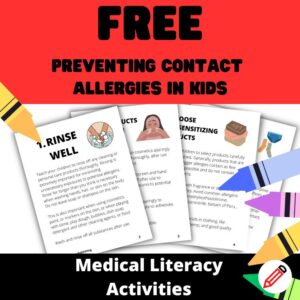
OVERVIEW:
The discipline of medical education is constantly evolving, thus necessitating the ongoing evaluation of teacher’s position. With the current information overloading in the rapidly changing field of medical education, the role of the medical educator has undergone a major paradigm shift from being the one who “knows all the answers” to “facilitator of learning process”. Teachers exhibit admirable professional traits and communicate knowledgeable thought processes, which are crucial for students’ professional, clinical, and personal development.
METHODS:
1.COMMUNICATION SKILLS:
A medical educator’s primary responsibility is to enlighten students about a subject. Teachers must learn how to adapt their lesson plans by making them relatable to current events. In their role, teachers are responsible for comprehending and breaking down complex ideas thus making it easy for students to comprehend it.
2. DIFFERENCE BETWEEN STUDENTS IN SPEED AND STYLE:
It is better to select an appropriate pace of learning for the whole group of students. As some students are fast learners, they may answer questions very quickly, and not leave enough time for the others to think. We need to be watchful for those who might not be keeping up. After presenting some problems or exercises, it is therefore better to leave some time for students to think before opening the discussion.
3. EFFECTIVE LEARNING ENVIRONMENT:
A learning environment fosters interaction, engagement, and the development of new skills. A learner can only advance and acquire knowledge while keeping an open mind, accept and value different points of view, and approach difficulties with sincerity. Learners are typically happier and more active when instructors provide these innate demands in every learning setting.
4. PRACTICAL DEMONSTRATION:
The medical educator should make sure that the students have enough opportunities to practice new skills, such as case studies, assignments and ward visits. Students can learn the fundamental skills to a certain degree of competency through role-playing and simulations in the clinical skills lab.
These techniques offer learning opportunities for the clinical skills necessary for the effective and safe management of future patients. Before students interact with actual patients, the practice needs to be supplemented by appropriate assessment and feedback.
5. KEEP IT POSITIVE:
Students respond better to compliments than to criticism. In contrast to humiliation, which is discouraging, appreciation is the key to motivation. The ability to freely express one’s thoughts is something that learners value, and their attitude toward learning is also greatly influenced by the opinions of their peers.
6. CELEBRATE SUCCESS:
Celebrate the student’s accomplishments to create a happy and productive learning environment. It could be anything from a public commendation to a substantial award. A sense of achievement has generated constructive learning habits that are encouraged when teachers acknowledge and celebrate students’ accomplishments with other students.
7. CONSTRUCTIVE FEEDBACK:
Giving pupils feedback is a fantastic approach to engaging them. Students need feedback because it enables them to monitor their development and adjust their learning strategies as necessary.
Students receive feedback that identifies their areas of weakness and what needs to be improved. An interactive learning environment ensured via timely and constant feedback is essential for motivating the student.
CONCLUSION:
An effective medical educator is approachable, encouraging, and knowledgeable about the material. They can effectively communicate with students as well. Teachers should be role models for their students in terms of knowledge, clinical practice and ethical values.
REFERENCES:
Soriano, Rainier P. MD; Blatt, Benjamin MD; Coplit, Lisa MD; CichoskiKelly, Eileen PhD; Kosowicz, Lynn MD; Newman, Linnie MS, ANP; Pasquale, Susan J. PhD, MT-BC, NMT; Pretorius, Richard MD, MPH; Rosen, Jonathan M. MD; Saks, Norma S. EdD; Greenberg, Larrie MD. Teaching Medical Students How to Teach: A National Survey of Students-as-Teachers Programs in U.S. Medical Schools. Academic Medicine: November 2010 – Volume 85 – Issue 11 – p 1725-1731 doi: 10.1097/ACM.0b013e3181f53273
Ralhan S, Bhogal P, Bhatnagar G, Young J, Green M. Effective teaching skills—how to become a better medical educator BMJ 2012; 344 :e765 doi: doi.org/10.1136/bmj.e765
===
Hamza Athar is currently a third year MBBS (bachelor of medicine, bachelor of surgery) student at QUAID-E-AZAM medical college, Bahawalpur, Pakistan.
Interested in teaching medical literacy pain free? Shop medical literacy resources!
You may also be interested in the following articles:
How to promote self-directed learning in medical education
How to improve medical education
What makes a good medical teacher
5 Areas of improvement for teaching in medical education
Becoming a good medical educator
Interrogating medical trainees in ward rounds: Fear and the Socratic method
 |
 |
|---|---|
 |
 |

